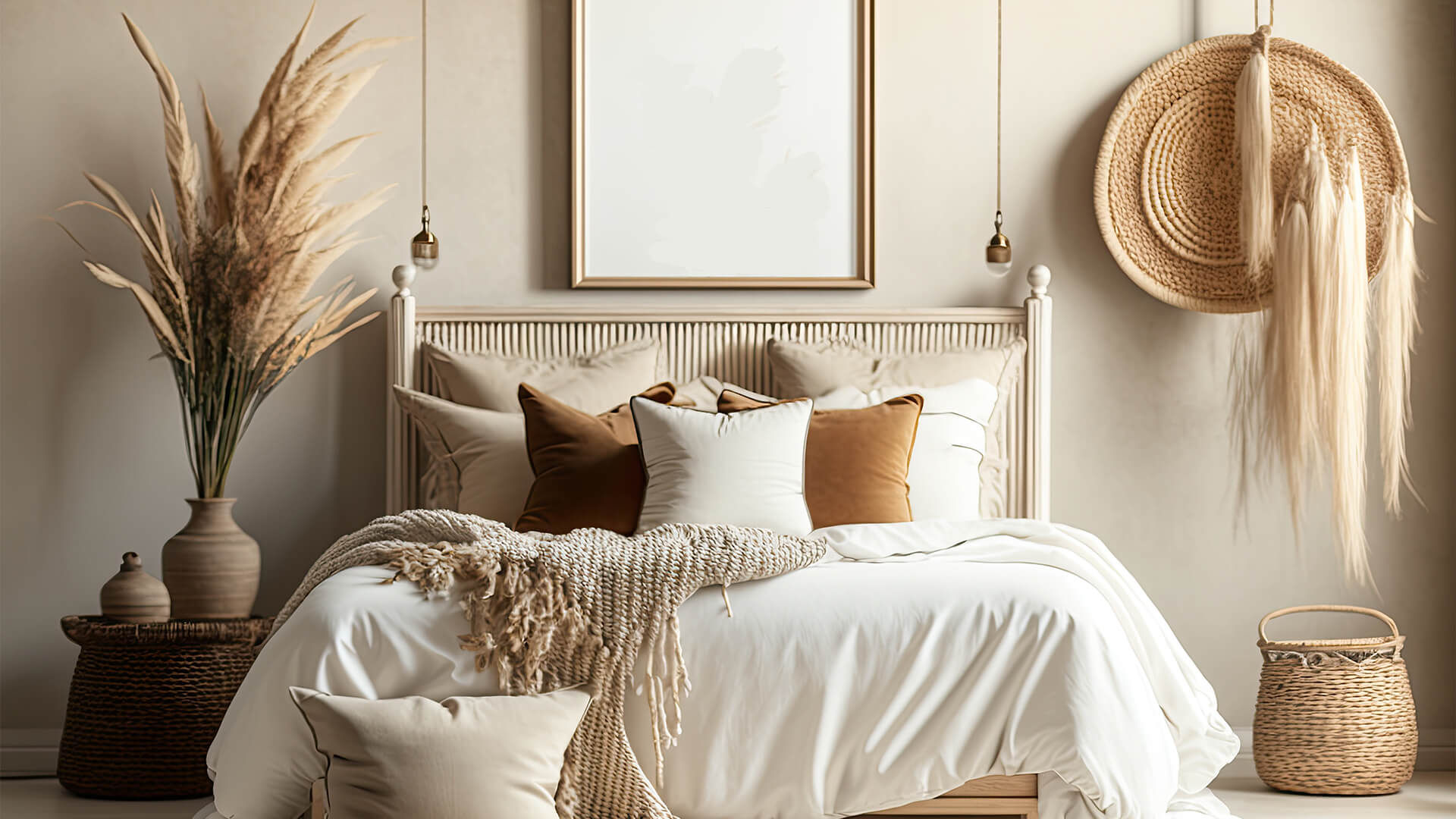The slow living movement is here to stay. With the wellbeing industry growing year on year, most of us are keen to prioritise self-care and avoid burnout. The best place to start? Your home. The key to the slow life mindset is to curate a more meaningful and conscious lifestyle, disconnect from technology and prioritise what you value most in life.
Below, interior designer for 247 Blinds and 247 Curtains Amy Wilson offers ways to improve your home and build the ultimate slow living space.
1. Creating quiet spaces
Amidst the chaos of everyday life, if you’re wanting to create a slow, soft space in your home – you should also consider the impact of sound.
Amy says “This is not just about creating a room or nook to escape to for some peace and quiet, it’s about integrating features within the home that absorb sound and offer a more relaxed environment. This is particularly key if you have wood flooring or high ceilings and in big, open spaces.
“Choose soft furnishings carefully and make sure you have enough soft materials in every room to absorb noise – it’s amazing what a pair of floor-length curtains or a roman blind can do to soften a room. The best materials for sound absorption tend to be lighter, softer and more porous – like cotton and wool, so consider this with every piece of furniture and decor that you buy.”
2. Contrasting textures
It’s not just colours and styles that shape the atmosphere of a room.
Amy says “Contrasting different textures is a subtle, yet impactful way of developing an interior scheme that leans into more mindful living. Texture gives the room visual weight, adds interest with layers and creates an inviting and cosy ambience. Looking for textures with different weights and appearance is key so look for sheepskins on wooden floors, linen curtains draped on wool carpets or baskets piled high with a variety of blankets.
If you have lots of wooden furniture, you might want to consider how cottons and linens can create a softer surrounding. Adding soft roman blinds or linen table runners to wooden furnishings can visually soften harder surfaces. Natural materials will bring an instant feeling of calm as they evoke our natural environment and the wellbeing power of the great outdoors.”
3. It doesn’t have to be minimalist
Whatever your style is, you can still incorporate elements of slow, soft and quiet living into your interiors.
Amy shares: “I think sometimes people associate slow living and mindful interiors with minimalist design. If that’s your aesthetic and it works for you – go for it! But I think that it’s important to go with a style and theme that you love, don’t feel the need to purge your whole home for soft, slow interiors.
Equally, if there’s a particular colour or pattern that you really love – use it! You may want to do this subtly if it’s a bold shade so that it’s not too overwhelming on the senses. These can be easily introduced as accents with your home accessories like vases, rugs or blinds and curtains.
The interiors of your home should bring you joy so avoid looking to trends and instead look to the colours and textures that make you feel happy. If that is bold and bright then embrace it.”
4. Choose pieces that bring you joy
Slow living is all about cultivating a life that brings you joy. And your home should be no different.
Amy suggests “Express your personality in your home by choosing pieces that you feel attached to – making features out of your favourite record sleeves or hanging vintage posters that you love to make your home uniquely yours. Get those favourite photos saved in your phone printed and find interesting ways to display them around the home. A stylish gallery wall could use matching black frames for a uniform look or alternatively source vintage frames and take a more eclectic approach. A treasure drawing from a child could be printed onto a large canvas to take centre stage rather than lots of scraps of paper pinned to various surfaces”
5. Reducing tech in the home
If you’re trying to live a more mindful lifestyle you should consider reducing the number of appliances.
“Technology is one of the biggest distractions in the home – and whilst it can be incredibly useful to our lives, it can also take up a lot of our time. Swap out your morning scroll for another hobby or activity that you enjoy – and create a space to do so. Whether that’s a reading nook or musical corner, you should take any devices out of this space and devote it solely to mindful practice.”
6. Buy less
You don’t need to go out and buy loads of new furniture to create a mindful space.
“I’d encourage anyone who wants to embrace the slow living movement to really take the time to assess what you need in your home. Try to stick to the mantra ‘buy less but invest’ (in higher quality items). Spend your money wisely on key pieces of furniture that you know you’ll love for years to come and shop around.”
































